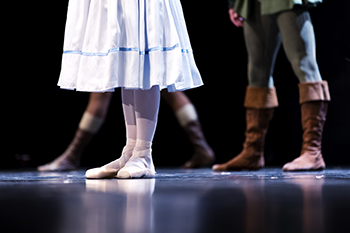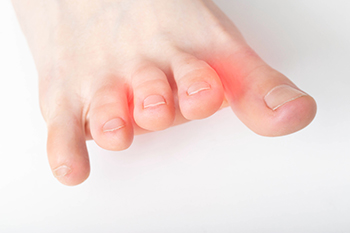Items filtered by date: July 2023
How Exercise Can Help Prevent Falls

Every year about one quarter of older adults experience a fall, which is the leading cause of injury in people aged 65 and above. Specific physical changes, including muscle weakness, balance problems, and declining vision, can contribute to the risk of falling. As one ages, navigating stairs, curbs, and loose carpeting can become increasingly difficult. In addition, chronic conditions such as arthritis and diabetes can negatively affect balance, coordination, and stability. Additionally, some medications commonly taken by seniors, such as blood pressure or other ailments, can cause dizziness or drowsiness that further increases the risk of falling. Balance and strength training exercises, tai chi, and yoga are a few options seniors have that may help to decrease the likelihood of a fall. Flexibility training exercises to increase the range of motion and reduce stiffness can help improve reaction times. Using an assistive device, such as a walker or cane, is another way to help seniors become more stable on their feet. For further information about the prevention of falls, it is suggested that you make an appointment with a podiatrist.
Preventing falls among the elderly is very important. If you are older and have fallen or fear that you are prone to falling, consult with Richard DiBacco, DPM from Podiatry Associates of Erie, Inc.. Our doctor will assess your condition and provide you with quality advice and care.
Every 11 seconds, an elderly American is being treated in an emergency room for a fall related injury. Falls are the leading cause of head and hip injuries for those 65 and older. Due to decreases in strength, balance, senses, and lack of awareness, elderly persons are very susceptible to falling. Thankfully, there are a number of things older persons can do to prevent falls.
How to Prevent Falls
Some effective methods that older persons can do to prevent falls include:
- Enrolling in strength and balance exercise program to increase balance and strength
- Periodically having your sight and hearing checked
- Discuss any medications you have with a doctor to see if it increases the risk of falling
- Clearing the house of falling hazards and installing devices like grab bars and railings
- Utilizing a walker or cane
- Wearing shoes that provide good support and cushioning
- Talking to family members about falling and increasing awareness
Falling can be a traumatic and embarrassing experience for elderly persons; this can make them less willing to leave the house, and less willing to talk to someone about their fears of falling. Doing such things, however, will increase the likelihood of tripping or losing one’s balance. Knowing the causes of falling and how to prevent them is the best way to mitigate the risk of serious injury.
If you have any questions, please feel free to contact one of our offices located in Erie and Meadville, PA, . We offer the newest diagnostic and treatment technologies for all your foot care needs.
Dance Foot Injuries

Dance is a beautiful art form, but it can take a toll on the dancer’s feet. Foot injuries are common among dancers because of the repetitive and high-impact movements involved. One foot injury that many dancers experience is metatarsalgia or pain and inflammation in the balls of the feet. This condition can result from a variety of things, including excessive flexibility, repetitive stress on the metatarsal bones, improper technique, and inadequate footwear. A dancer can practice prevention techniques to maintain their health and the quality of their performance. Resting and strengthening the muscles on the bottom of the feet often help with inflammation and pain. An example of an exercise that is useful is toe scrunches, which involves pulling a towel across the floor inward with the toes. Adding cushioning to dance shoes and orthotics to regular shoes might reduce the damage this ailment has on the feet. If you are a dancer and are experiencing foot pain, it is suggested that you visit a podiatrist for an examination and treatment.
Sports related foot and ankle injuries require proper treatment before players can go back to their regular routines. For more information, contact Richard DiBacco, DPM of Podiatry Associates of Erie, Inc.. Our doctor can provide the care you need to keep you pain-free and on your feet.
Sports Related Foot and Ankle Injuries
Foot and ankle injuries are a common occurrence when it comes to athletes of any sport. While many athletes dismiss the initial aches and pains, the truth is that ignoring potential foot and ankle injuries can lead to serious problems. As athletes continue to place pressure and strain the area further, a mild injury can turn into something as serious as a rupture and may lead to a permanent disability. There are many factors that contribute to sports related foot and ankle injuries, which include failure to warm up properly, not providing support or wearing bad footwear. Common injuries and conditions athletes face, including:
- Plantar Fasciitis
- Plantar Fasciosis
- Achilles Tendinitis
- Achilles Tendon Rupture
- Ankle Sprains
Sports related injuries are commonly treated using the RICE method. This includes rest, applying ice to the injured area, compression and elevating the ankle. More serious sprains and injuries may require surgery, which could include arthroscopic and reconstructive surgery. Rehabilitation and therapy may also be required in order to get any recovering athlete to become fully functional again. Any unusual aches and pains an athlete sustains must be evaluated by a licensed, reputable medical professional.
If you have any questions please feel free to contact one of our offices located in Erie and Meadville, PA, . We offer the newest diagnostic and treatment technologies for all your foot and ankle needs.
Can Morton's Neuroma Go Away?

Morton’s neuroma, known as intermetatarsal neuroma, is an inflamed nerve in the ball of the foot, typically behind the third and fourth toes. It can occur from wearing tight shoes or from having foot deformities. Morton’s neuroma presents itself as pain, swelling, numbness, tingling, or burning of the front of the foot. Those who have had this condition liken it to the feeling of walking on a pebble or rolled-up sock. This nerve is sensitive to excessive weight on the foot and scar tissue can form around the nerve and sometimes enlarge it. Those who wear high heels or tight-fitting shoes are susceptible to this condition. Treatments vary by the severity of Morton's neuroma. Resting the foot, cushioning the ball of the foot with padding, and wearing orthotics to take pressure off of the nerve can help. If more conservative treatment does not relieve discomfort, surgery can be performed to remove the inflamed nerve segment. If you are suffering from pain in your midfoot, it is suggested that you make an appointment with a podiatrist for a proper diagnosis and a treatment plan that is customized to your situation.
Morton’s neuroma is a very uncomfortable condition to live with. If you think you have Morton’s neuroma, contact Richard DiBacco, DPM of Podiatry Associates of Erie, Inc.. Our doctor will attend to all of your foot care needs and answer any of your related questions.
Morton’s Neuroma
Morton's neuroma is a painful foot condition that commonly affects the areas between the second and third or third and fourth toe, although other areas of the foot are also susceptible. Morton’s neuroma is caused by an inflamed nerve in the foot that is being squeezed and aggravated by surrounding bones.
What Increases the Chances of Having Morton’s Neuroma?
- Ill-fitting high heels or shoes that add pressure to the toe or foot
- Jogging, running or any sport that involves constant impact to the foot
- Flat feet, bunions, and any other foot deformities
Morton’s neuroma is a very treatable condition. Orthotics and shoe inserts can often be used to alleviate the pain on the forefront of the feet. In more severe cases, corticosteroids can also be prescribed. In order to figure out the best treatment for your neuroma, it’s recommended to seek the care of a podiatrist who can diagnose your condition and provide different treatment options.
If you have any questions, please feel free to contact one of our offices located in Erie and Meadville, PA, . We offer the newest diagnostic and treatment technologies for all your foot care needs.
Treating a Wound on the Bottom of the Foot

Having a wound on the bottom of the foot can not only be painful, but it can also be extremely difficult to treat. With any wound, cleaning and disinfecting it is important. Fortunately, minor cuts heal relatively quickly on their own, and an antibiotic ointment and simple bandage are enough to do the job. Staying off the foot as much as possible is a big help, too. The real problem with a wound on the bottom of the foot is when it is deep, won’t stop bleeding, or becomes infected. In those cases, it is suggested that you contact a podiatrist for immediate assistance. Keeping the wounded area covered is an effective and important way to avoid dire complications. After cleaning and dressing the area, adding a bandage, then a gauze wrapping, followed by an elastic bandage is suggested by experts. These bandages should be tight enough to protect the wound, but not so tight that circulation to the foot is cut off. If you are unsure of how to deal with a wound on the sole of the foot, it is suggested that you contact a podiatrist.
Wound care is an important part in dealing with diabetes. If you have diabetes and a foot wound or would like more information about wound care for diabetics, consult with Richard DiBacco, DPM from Podiatry Associates of Erie, Inc.. Our doctor will assess your condition and provide you with quality foot and ankle treatment.
What Is Wound Care?
Wound care is the practice of taking proper care of a wound. This can range from the smallest to the largest of wounds. While everyone can benefit from proper wound care, it is much more important for diabetics. Diabetics often suffer from poor blood circulation which causes wounds to heal much slower than they would in a non-diabetic.
What Is the Importance of Wound Care?
While it may not seem apparent with small ulcers on the foot, for diabetics, any size ulcer can become infected. Diabetics often also suffer from neuropathy, or nerve loss. This means they might not even feel when they have an ulcer on their foot. If the wound becomes severely infected, amputation may be necessary. Therefore, it is of the upmost importance to properly care for any and all foot wounds.
How to Care for Wounds
The best way to care for foot wounds is to prevent them. For diabetics, this means daily inspections of the feet for any signs of abnormalities or ulcers. It is also recommended to see a podiatrist several times a year for a foot inspection. If you do have an ulcer, run the wound under water to clear dirt from the wound; then apply antibiotic ointment to the wound and cover with a bandage. Bandages should be changed daily and keeping pressure off the wound is smart. It is advised to see a podiatrist, who can keep an eye on it.
If you have any questions please contact one of our offices located in Erie and Meadville, PA, . We offer the newest diagnostic and treatment technologies for all your foot and ankle needs.



